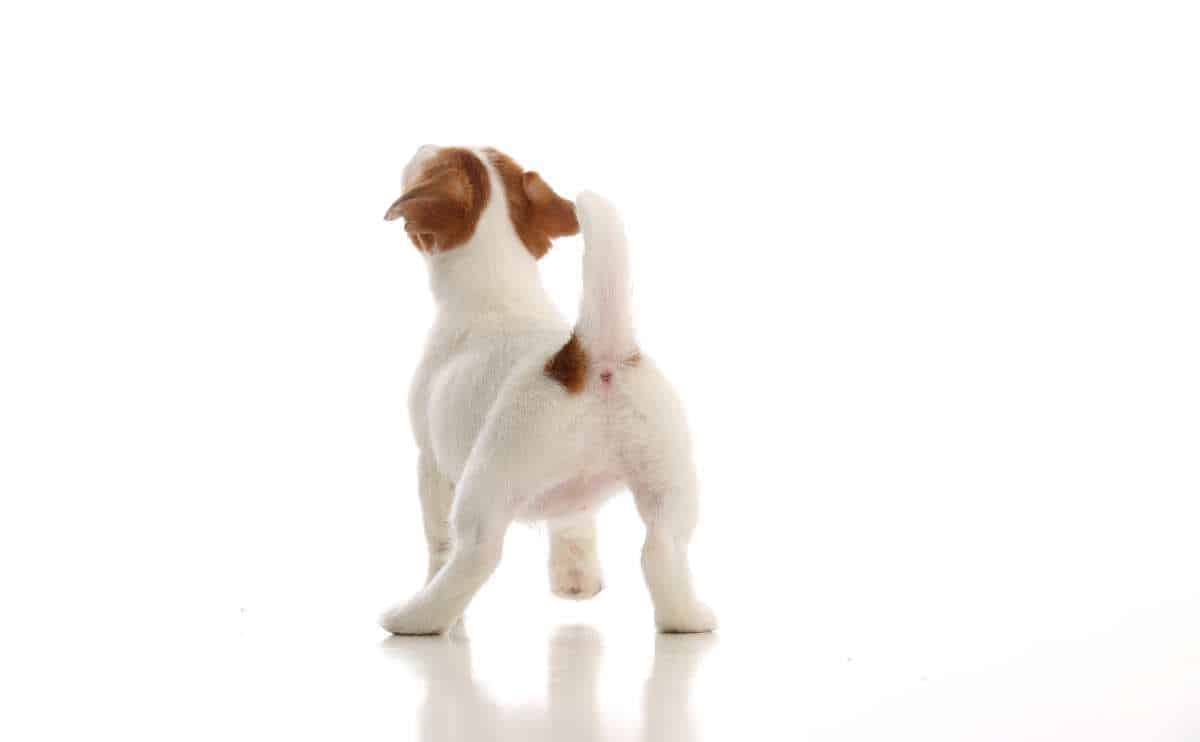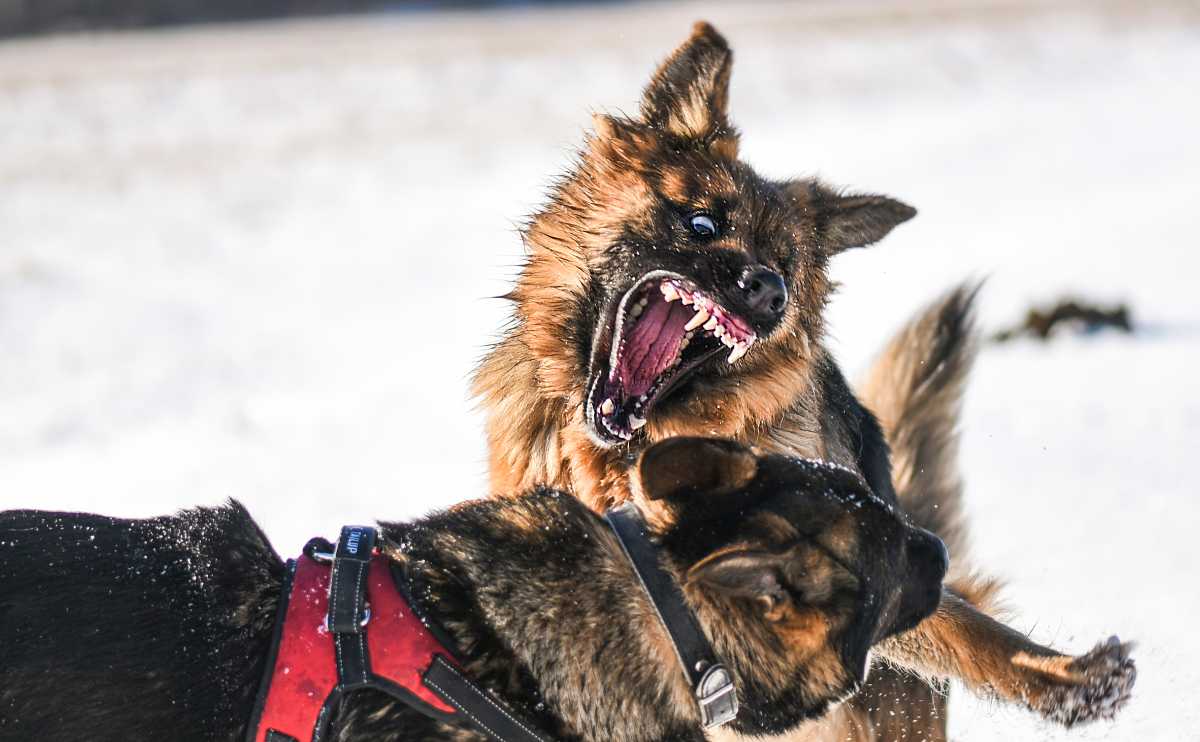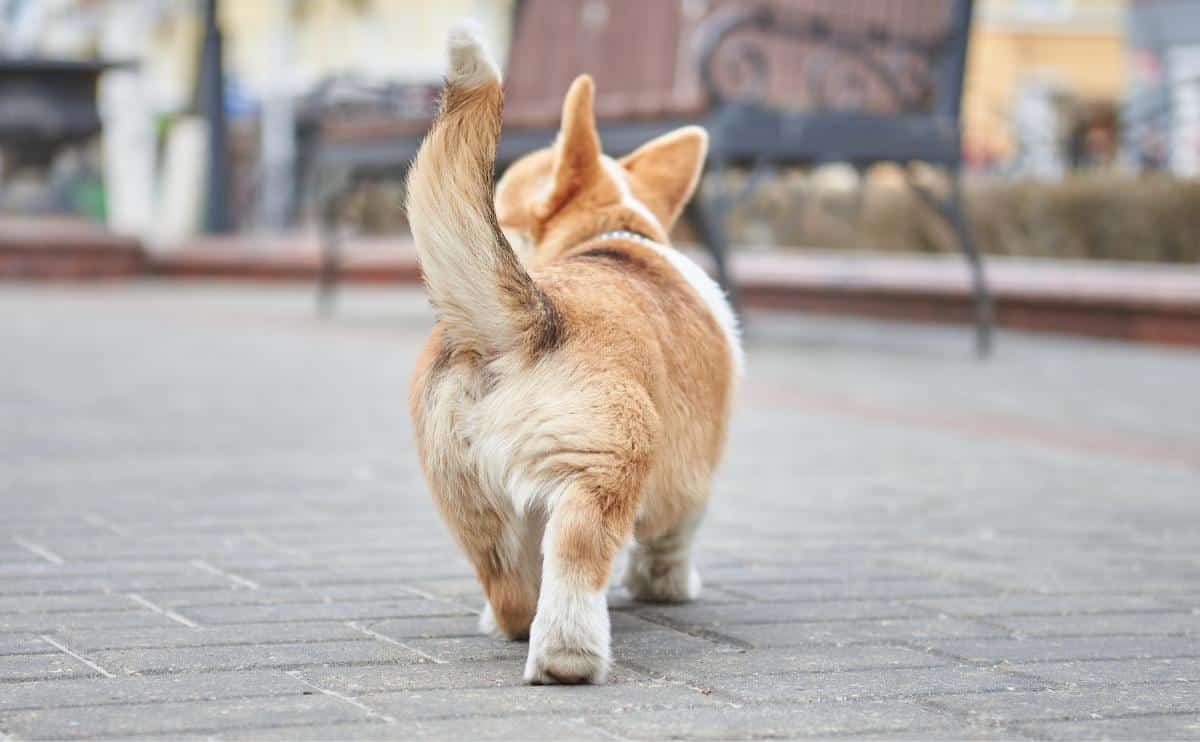When you purchase through links on our site, we may earn a commission. Here’s how it works.

Dogs have a lot of interesting behaviors. Sometimes, these can be a sign of something severe, and other times, it can just be a quirk. The same is true of a dog walking backwards. If your pup is exhibiting this behavior, I’ll help you understand what it could mean for him.
Can Dogs Walk Backwards?
The short answer is yes. You can train your dog to walk backwards, and it’s also a behavior that can develop on its own for various reasons.
Is It Rare For Dogs To Walk Backwards?
No, it is not rare for dogs to walk backward. They do so for a number of reasons. Some are harmless and may even be done as a trick or for fun, but sometimes, this behavior can indicate an underlying medical or neurological issue.
Why Does My Dog Walk Backwards?
So, why do dogs walk backwards? If you train your dog to walk backward, that’s reason enough for him to do it, but if not, the cause can vary. Be sure to check with your vet if this behavior is not typical for your pup. The most common reasons for this behavior are a neurological disorder or fear. It’s essential to observe your pup for any other signs or symptoms that may occur when your dog is walking backward. These symptoms may help your veterinarian determine if something more serious is going on.
- Cowering
- Confusion
- Disorientation
- Ears drop
- Easily winded or tired
- Other out-of-character behaviors
- Pain
- Shaking
- Tail tucking
- Whimpering or whining
What Medical Conditions Cause A Dog To Walk Backward?

There are a few different medical conditions that may contribute to your dog walking backward. In many cases, dogs walk backwards to avoid discomfort and pain that affects the hind legs, abdomen, and hips. These conditions can be physical as well as include neurological issues.
Physical Conditions
- Arthritis
- Loose patella (kneecap)
- Impacted anal glands
- Joint problems
Neurological Conditions
- Confusion in older dogs caused by cognitive decline
- Past trauma
- Seizures
- Epilepsy
- Anxiety
- Vestibular Syndrome
- Ataxia
My Personal Experience With Dogs Walking Backwards
My dog Bear, a black Labrador Retriever, had epilepsy. He would have frequent seizures, which caused disorientation. Bear would often walk backward with a wobbly gait after a seizure. As he grew older, he started to show signs of cognitive decline and confusion, and this behavior increased.
My other dog, Daisy, a 12-year-old Labrador Pitbull mix, also walks backward as a fear response. She is very sensitive to loud noise and will become very panicky and nervous when she hears anything like a firework, a car backfire, power tools, or even loud yelling. When she has this fear response, she will freeze and then slowly back away from the thing that scared her. She also does this on smooth floors like tile or hardwood.
Frequently Asked Questions
Here’s a list of frequently asked questions about dogs walking backward. If I missed yours, let me know in the comments.
Why Has My Dog Started Walking Backwards?
Your dog suddenly starting to walk backward may simply be them trying it out for fun, but it could also indicate one of the issues I’ve mentioned. Any type of sudden behavior change is worth talking to your vet about. Especially if it is accompanied by any other symptoms or odd behavior.
Why Does My Dog Walk Backwards On Hardwood Floors?
This nervous behavior may be due to an unsafe feeling on the hardwoods or the room where the hardwoods are making the pup feel unsafe.
Why Do Dogs Walk Backwards Through Doors?
There may be something about the door that makes your pup fearful. If it’s only particular doors, once he’s in the doorway space, pay attention to how he reacts. Again, this may be fear-related.
Why Does My Dog Walk Backwards Into A Room?
The cause of this behavior could be fear of the room, something in it, or even the doorways that your pup has to go through to get into the room.
Why Is My Puppy Walking Backwards?
When a puppy is walking backward, the concerns are the same as they would be for an older dog. Pay attention to other behaviors and talk to your vet about what is going on.
Why Is My Dog Walking Backwards In Circles?
Teaching your dog to walk backward in circles would be challenging, so this is quite likely a sign of concern. It could be due to an ear infection, an injury, or a neurological problem.
Why Is My Dog Is Walking Sideways?
Injury, pain, hip dysplasia, or neurological disorders can cause a dog to begin walking sideways. Learn more in our guide about why dogs may walk sideways and fall over. If you notice any sudden changes in behavior, notify your vet as soon as possible.
Teach Your Dog To Walk Backwards
This two-minute video from Louby Love can give you some tips on how to train your pup to walk backwards.
Behaviors Can Be A Sign of Something Else
When your dog walks backwards, it can be a sign of something more serious. But walking backwards isn’t the only behavior that can tell you something else is going on with your pup. Panting and pacing are other behaviors that may indicate that you need to discuss your dog’s behavior with your vet.
You may want to consider pet insurance for your pup. Even if they are healthy now, all dogs experience sickness and other medical issues as they live and age. Pet insurance can help cover the cost of care so you can focus on your fur baby’s recovery.
Wondering How Often To Walk Your Dog?
As a pet owner, I know my dogs need daily exercise, and they love walks, But how much walking time do dogs need? While all dogs need them, not all breeds need the same amount. Larger breeds often need more exercise, while smaller breeds need to go shorter distances to avoid overworking their joints. We cover this in detail in our guide on how often to walk a dog. And, if your pup has mobility issues, you can learn more about dog wheelchairs to help get them back out and enjoy life again.
Why Trust Canine Journal?
Danielle has shared a special bond with dogs since she was a young child and has direct experience with dogs who walked backwards during specific health situations. She has over 30 years of pet care experience, including pets with special needs. Danielle has worked as a professional researcher for many years. She spends countless hours researching the latest science and data-backed research on pet care, health, nutrition, and training developments with the enthusiastic help of her two dogs, Daisy and Falkor. Danielle works with a professional and experienced team to bring our readers the best, most accurate, and up-to-date information.
Tagged With: Brain

